Territorial & Freely Associated Oral Health Programs
Federated States of Micronesia
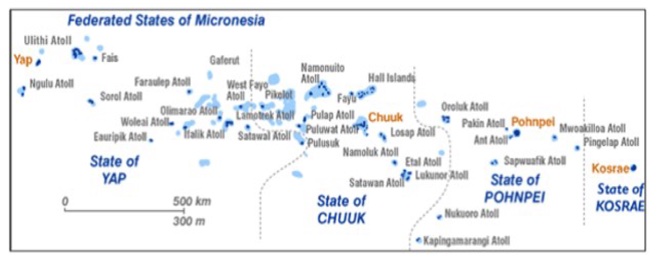
Health Services: There are four hospitals in the FSM, one located in each of the main states of Chuuk, Kosrae, Pohnpei, and Yap. Each state manages its own health services, while the FSM National government (similar to US federal government) provides overall policy and legislative oversight, including management of all external funds coming into the FSM, which is subsequently sub-allotted to each of the state government health agencies.
Demography: The ethnicity of the FSM is primarily Micronesian with several Polynesians in the outlier islands. Seven official languages are spoken in the FSM and the per capita income is $3,400. The literacy rate is 89%, lower than any other US-associated area. The youth and elderly dependency ratio are 0.59 and 0.05, respectively. Together, the total dependency ratio (TDR) is 0.64, indicating a high economic burden of the non-workforce population on the productive members of the population.
Sociocultural determinants of health: The percent of population below poverty is 41.2% (different calculation from the Federal poverty guidelines for the 48 contiguous States), 17 times lower than the US per capita income. Infant mortality rate in FSM is almost three times higher than in the US. The high population density belies the fact that FSM spans > 1 million sq. miles of ocean and only comprises 270.8 sq. miles of inhabited land. Because FSM has one airport in each of the individual states, and because they are considered international airports, travel costs are incredibly high. The travel limitations to the people of FSM and the low per capita income of $3,400 make it difficult to seek and receive proper health care. High HPSA and MUA/P designations and high infant mortality rates show that the states of Chuuk, Kosrae, Pohnpei, and Yap need both 1) better access to service providers, and 2) better health care overall.
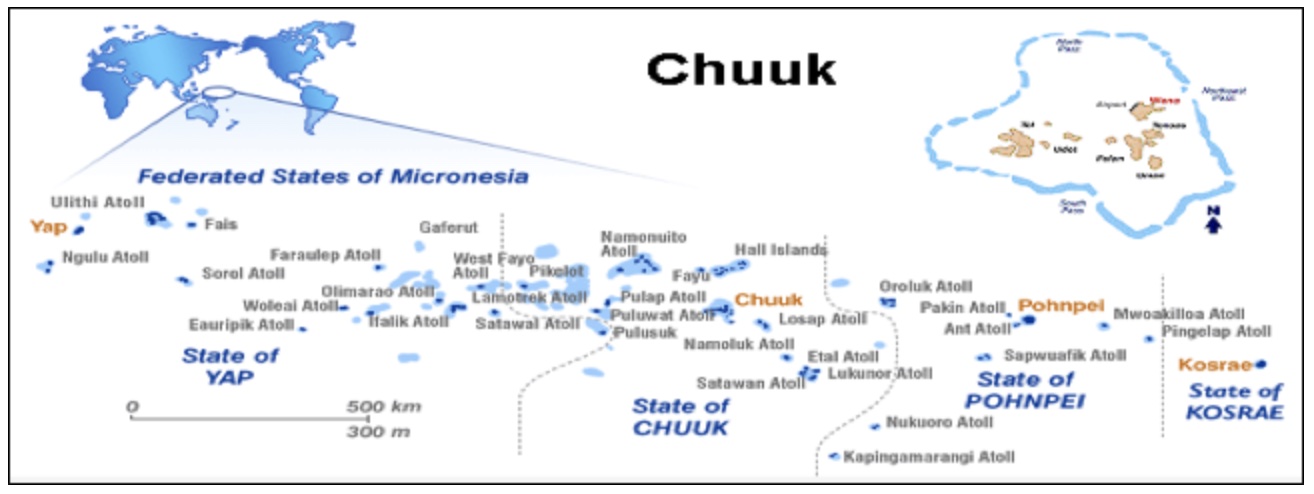
Geography: Chuuk State, FSM, is the state to the east of Yap. The most populous of the FSM States is comprised of five island groups, each further comprised of numerous small islands/atolls, within which several distinct Chuukese dialects are spoken. The primary mode of transportation is by private boats (within Chuuk lagoon) or field ship for the outer islands. Chuuk is the site of the famous WWII Battle of the Truk Lagoon, where unexploded munitions continue to pose threats to the location throughout the Chuuk lagoon islands. Health Services: Chuuk has one hospital, the Chuuk State Hospital, and 3 community health centers located in Weno and multiple dispensaries throughout the entire state. Demography: NCD prevalence in Chuuk are rising, as evidenced by high rates of obesity (62.8% in women and 31.8% in men). Sociocultural determinants of health: High poverty levels as well as the distance between islands, shortage or maldistribution of health providers and services, and lack of transportation limit the ability of the people to seek and/or receive proper health care and assistance.
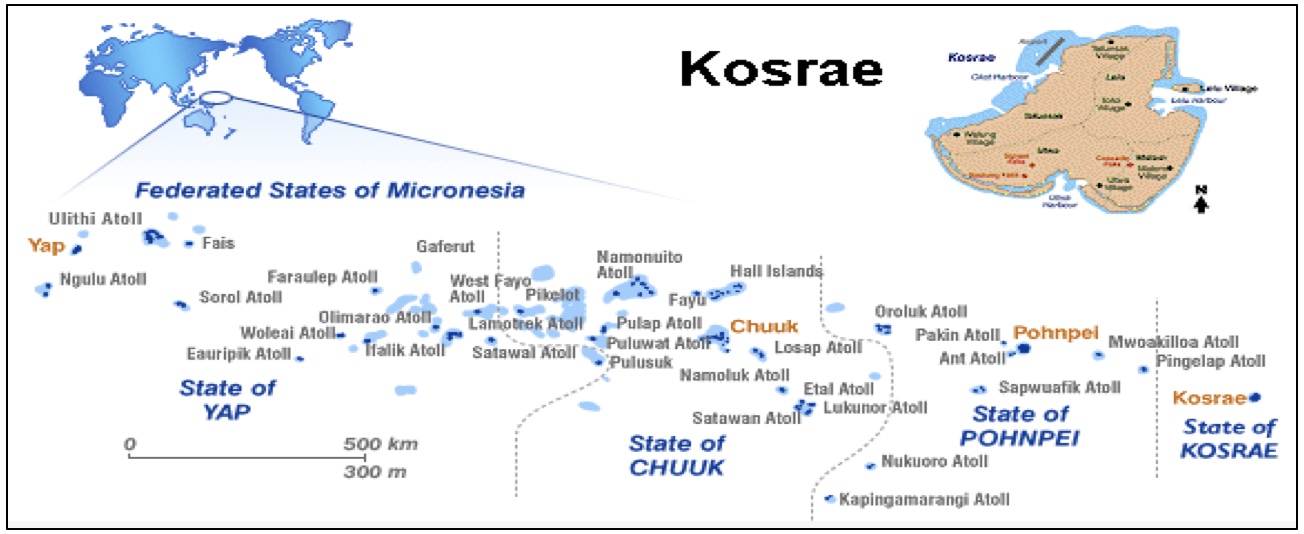
Geography: Kosrae State, FSM, is made up of a single 70-square mile mountainous island and is the easternmost state of the FSM. Like the other states of the FSM, Kosrae is served by expensive once weekly jet service and infrequent supply ships. Kosrae has its own unique language and culture and is primarily ethnic Micronesian. Health Services: Kosrae has one hospital, the Kosrae State Hospital, in the Lelu Municipality on Kosrae Island. In addition, there are three Community Health Centers (CHC) throughout Kosrae. Demography: NCD prevalence are rising, as evidenced by high rates of obesity (~60%). Sociocultural determinants of health: High poverty levels and lack of transportation limit the ability of people to seek proper health care and assistance.
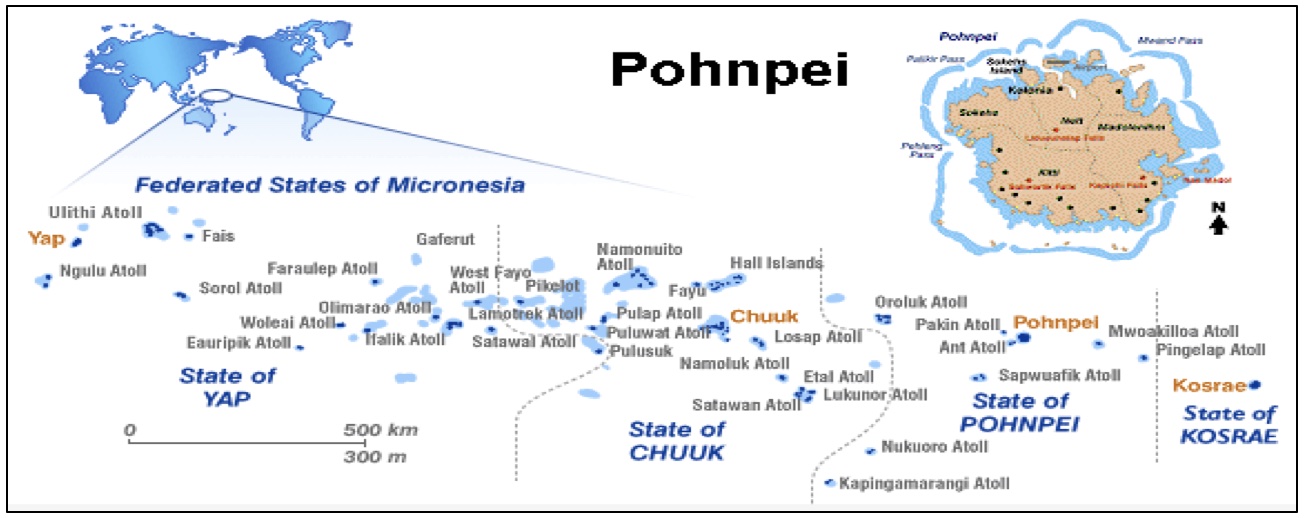
Geography: Pohnpei State is the next state to the east and is the capital island of FSM. Most of the residents of Pohnpei live on the 200 square mile mountainous island of Pohnpei. There are four populated outer-islands of which two are Polynesian outliers-– Kapingamarangi and Nukuoro. There are several languages spoken (Polynesian language of the two Polynesian outliers, and two distinct Micronesian languages – Pohnpeian and Mwokilese). Health Services: Pohnpei has one hospital, the Pohnpei State Hospital, located in the capital city of Kolonia. Demography: Obesity rates in Pohnpei were 55.8% for females, and 30.7% for males, directly correllating to the high prevalence of NCD in the island. Socioeconomic determinants of health: High poverty levels as well as the distance between islands, shortage or maldistribution of health providers and services and lack of transportation limit the ability of the people to seek and/or receive proper health care and assistance.
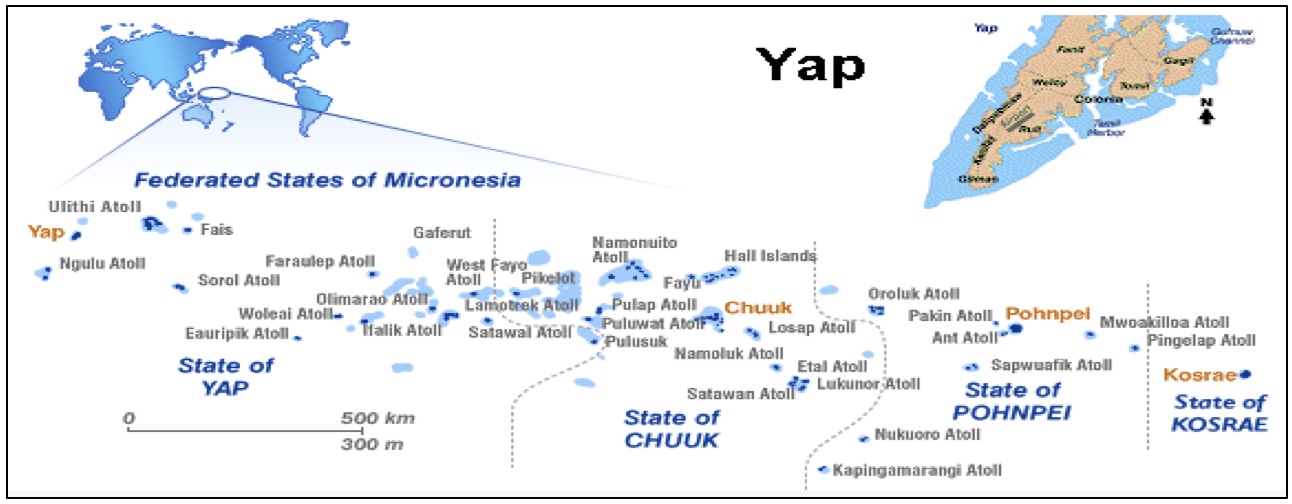
Geography: Yap State is the westernmost of the states of the FSM and has over 130 atolls (ring-like remnants of ancient volcanoes) across 500,000 square miles of ocean, with only 38 square miles of habitable land. Two-thirds of its population live on the main island (Yap Proper), and the other one-third reside on 18 islands/atolls that lie between 100 to 500 miles east of Yap Proper. The people of the outer islands are ethnically distinct from those of Yap Proper, and speak a dialect called Woleain. Automobile, boat/ships, and aircraft are the primary modes of transportation in Yap; however, only three of the outlier islands/atolls have airstrips with the primary means of transport being a field ship from Yap Proper once a month. Health Services: Yap has one hospital, the Yap State Hospital, and several CHCs located in Colonia, the capital of Yap, and several health dispensaries in the outer islands. Demography: The burden of NCD is increasing. For example, adult obesity and diabetes rates are 36% and 20%, respectively. Socioeconomic determinants of health: High poverty levels as well as the distance between islands, shortage or maldistribution of health providers and services and lack of transportation limit the ability of the people to seek and/or receive proper health care and assistance.
* Information on the USAPI provided by PIHOA in 2019 and adapted for the ASTDD Needs Assessment Project and this webpage



